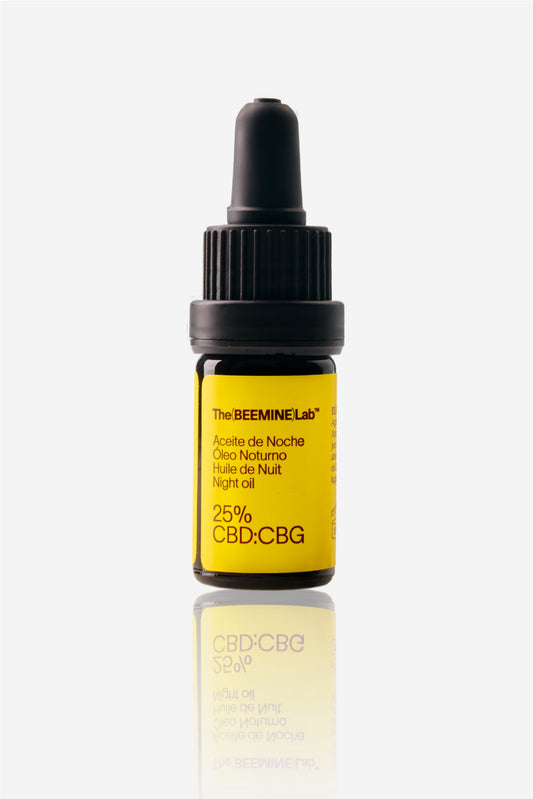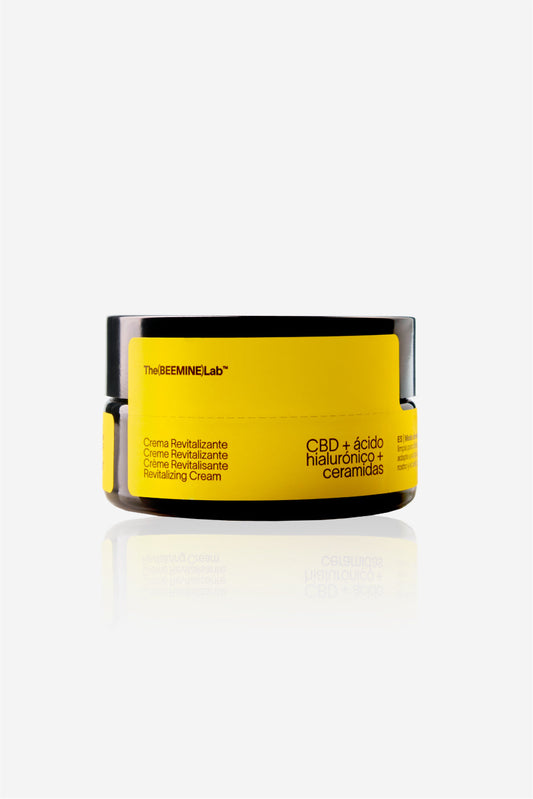What is Anandamide?
Anandamide is one of the main components of the Endocannabinoid System , the system present in the human and animal body that is dedicated to maintaining the physiological balance (homeostasis) of the organism , influencing the functioning of other systems such as the neurological, endocrine and immune systems. In particular, Anandamide was the first endocannabinoid neurotransmitter discovered in 1992, representing, together with 2-Arachidonglycerol, one of the main active molecules of the ECS. Its name comes from the Sanskrit word “Ananda” which means bliss and is known as the molecule of happiness , for its fundamental role in regulating the mechanisms of pleasure and motivation and in managing situations of imbalance both physically and mentally.What function does Anandamide have?
Anandamide is an endocannabinoid produced naturally by our body and synthesized in the brain that is activated, acts and decomposed very quickly by the activity of degradation enzymes called FAAH (fatty acid amide hydrolase). It is capable of interacting with the main receptors of the ECS, specifically CB1, CB2 and TRPV, participating in different physiological and cognitive processes :- It modulates cognitive processes of memory, attention and higher executive functions, in addition to being involved in emotional processing, influencing mood.
- Participates in motor planning and in the mechanisms of implementation and control of movement
- It is involved in the regulation of appetite
- It participates in the reproductive cycle and in fetal development, playing a very important role specifically in the development of the Nervous System and neurological functions.
- It is activated in response to physical imbalances such as inflammatory processes to increase the effectiveness of the body's response and modulate pain transmission.
- It plays a fundamental role in motivation mechanisms since it modulates the brain's reward system, which allows us to direct our behavior towards making decisions and performing actions that provoke the feeling of pleasure.
- It influences the Circulatory System, promoting the dilation of blood vessels.
- It modulates stress management mechanisms both in their acute and chronic forms, positively influencing the physiological and psychological response to stressful or traumatic situations, helping to reduce the psychological and cognitive symptoms of anxiety and fear and participating in the mechanisms of extinction of adverse memories.
ANANDAMIDE AND THC
Anandamide has a structure similar to THC and its way of acting on endocannabinoid receptors is very similar, for this reason Anandamide is considered to be the “natural” THC produced by the body. Being an endogenous molecule, Anandamide does not cause a sensation of psychoactivity in the body like THC, although as explained above it positively influences the physical, psychological and emotional state . The therapeutic and medicinal properties of THC are due to the fact that it acts in a very similar way to Anandamide, allowing its properties to be enhanced and acting in its place in all cases where the stimulation of endocannabinoid receptors needs to be increased.ANANDAMIDE AND CBD
On the other hand, CBD represents a very valuable tool to stimulate the Endocannabinoid System and increase Anandamide levels indirectly , since CBD has the ability to inhibit the FAAH enzymes, responsible for the degradation of Anandamide. By blocking these enzymes, the amount of Anandamide available increases and a greater stimulation of the CB1 and CB2 endocannabinoid receptors is verified, as well as of the TRPV, the specific receptors that modulate pain transmission, which are also directly stimulated by CBD.Therapeutic potential of Anandamide
Most physical and psychological diseases are related to low levels of Anandamide and a pathophysiology that includes psycho-physical stress and an inflammatory state, so that it has been hypothesized that the etiology of some diseases such as Fibromyalgia, Irritable Bowel Syndrome and Migraines could originate in a dysfunction of the Endocannabinoid System itself. In these cases, THC could be of great help as a “substitute” for Anandamide, while CBD would increase its concentration, helping to reestablish the balance of the ECS itself and providing different therapeutic effects:- Anxiolytic and antipsychotic effect, promoting psychological and psychiatric symptoms
- Antioxidant and neuroprotective effect, promoting the development and maintenance of neurological functions
- Favorable effect on metabolism
- Analgesic and anti-inflammatory effect, relieving symptoms related to inflammation and pain
- Antidepressant effect, promoting motivation especially in detoxification/dishabituation processes
- Hypotensive and relaxing effect

Is there a natural source of Anandamide?
In recent years it has been discovered that Anandamide is not only produced by the human and mammalian body, but can also be found in some natural foods such as chocolate (cocoa) and sea urchins , although its bioavailability appears to be relatively low due to the presence of degradation enzymes in the digestive tract.How to increase Anandamide levels in the body?
The most appropriate way to raise Anandamide levels in the body is through the use of CBD , especially internally (not regulated in the EU) due to its systemic effect and to a more limited extent externally in applications in specific areas. For internal use, it is advisable to use a low-medium concentration oil (5%-10%) and gradually increase the dosage until a favorable effect is found, although in these cases it is always advisable to consult a specialized professional. Literature:- Devane, W.A., Hanus, L., Breuer, A., Pertwee, R.G., Stevenson, L.A., Griffin, G., Gibson, D., Mandelbaum, A., Etinger, A., & Mechoulam, R. (1992). Isolation and structure of a brain constituent that binds to the cannabinoid receptor. Science (New York, NY) , 258 (5090), 1946–1949. https://doi.org/10.1126/science.1470919
- Zona, LC, Fry, BR, LaLonde, JA, & Cromwell, HC (2017). Effects of anandamide administration on components of reward processing during free choice. Pharmacology, biochemistry, and behavior , 158 , 14–21. https://doi.org/10.1016/j.pbb.2017.05.008
- Scherma, M., Masia, P., Satta, V. et al. Brain activity of anandamide: a rewarding bliss?. Acta Pharmacol Sin 40, 309–323 (2019). https://doi.org/10.1038/s41401-018-0075-x
- Tóth, A., Blumberg, P.M., & Boczán, J. (2009). Anandamide and the vanilloid receptor (TRPV1). Vitamins and hormones , 81 , 389–419. https://doi.org/10.1016/S0083-6729(09)81015-7
- Mechoulam, R., & Parker, L.A. (2013). The endocannabinoid system and the brain. Annual review of psychology , 64 , 21–47. https://doi.org/10.1146/annurev-psych-113011-143739
- Redlich, C., Dlugos, A., Hill, MN, Patel, S., Korn, D., Enneking, V., Foerster, K., Arolt, V., Domschke, K., Dannlowski, U., & Redlich, R. (2021). The endocannabinoid system in humans: significant associations between anandamide, brain function during reward feedback and a personality measure of reward dependence. Neuropsychopharmacology: official publication of the American College of Neuropsychopharmacology , 46 (5), 1020–1027. https://doi.org/10.1038/s41386-020-00870-x
- Mona R. El-Talatini, Anthony H. Taylor, et al. «Fluctuation in anandamide levels from ovulation to early pregnancy in in-vitro fertilization-embryo transfer women, and its hormonal regulation.» Human Reproduction, Volume 24, Issue 8, 1 August 2009, Pages 1989–1998, https://academic.oup.com/humrep/article-lookup/doi/10.1093/humrep/dep065
- Morena, M., Aukema, RJ, Leitl, KD, Rashid, AJ, Vecchiarelli, HA, Josselyn, SA, & Hill, MN (2019). Upregulation of Anandamide Hydrolysis in the Basolateral Complex of Amygdala Reduces Fear Memory Expression and Indices of Stress and Anxiety. The Journal of neuroscience: the official journal of the Society for Neuroscience , 39 (7), 1275–1292. https://doi.org/10.1523/JNEUROSCI.2251-18.2018
- Gunduz-Cinar, O., Hill, MN, McEwen, B.S., & Holmes, A. (2013). Amygdala FAAH and anandamide: mediating protection and recovery from stress. Trends in pharmacological sciences , 34 (11), 637–644. https://doi.org/10.1016/j.tips.2013.08.008
- Dos Santos, R.G., Hallak, J., & Crippa, J. (2021). Neuropharmacological Effects of the Main Phytocannabinoids: A Narrative Review. Advances in experimental medicine and biology , 1264 , 29–45. https://doi.org/10.1007/978-3-030-57369-0_3
- Crocq MA (2020). History of cannabis and the endocannabinoid system?. Dialogues in clinical neuroscience , 22 (3), 223–228. https://doi.org/10.31887/DCNS.2020.22.3/mcrocq
- Russo EB (2016). Clinical Endocannabinoid Deficiency Reconsidered: Current Research Supports the Theory in Migraine, Fibromyalgia, Irritable Bowel, and Other Treatment-Resistant Syndromes. Cannabis and cannabinoid research , 1 (1), 154–165. https://doi.org/10.1089/can.2016.0009
- Chocolate. (2021). In Drugs and Lactation Database (LactMed) . National Library of Medicine (US).
- James JS (1996). Marijuana and chocolate. AIDS treatment news , (No 257), 3–4.
- https://es.cannabis-mag.com/el-cannabis-de-locean/







